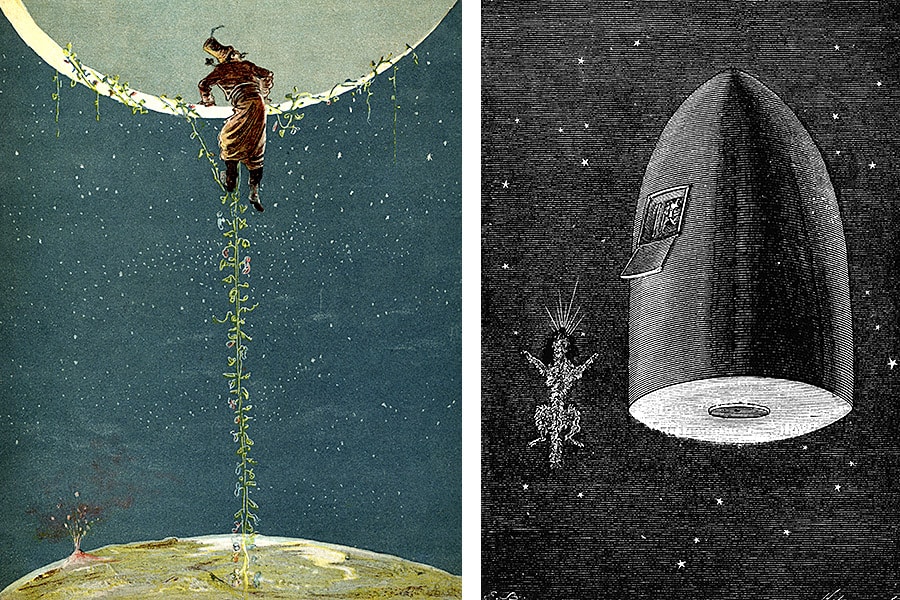
Chandrayaan-3: How we voyaged to the moon before we even set foot there
It wasn’t until as recently as 1969 that an Earthling first landed on the moon. Until then, the moon had been the cause of endless speculation by philosophers and astronomers, vicariously imagined by artists and poets, while the ill howled at the moon’s morbid waxing and waning, and lovers turned their gaze to it, fetchingly.
Even the conception of the Gods was the result of feverish speculation from a people overcome by the Moon’s aura. What mysteries lay in store beneath its luminescent face? What unspeakable things happened upon its surface when it curved into its veil of darkness?
 Image: Kean Collection/Getty Images. Courtesy TallengePictured above are two faces of the Moon goddess across time and place: An engraving depicts Diana, the Roman goddess of the moon and the hunt in Roman mythology, riding a chariot circa 10,000 BC. A Pahari school miniature shows Chandi, the Moon Goddess circa 1810.
Image: Kean Collection/Getty Images. Courtesy TallengePictured above are two faces of the Moon goddess across time and place: An engraving depicts Diana, the Roman goddess of the moon and the hunt in Roman mythology, riding a chariot circa 10,000 BC. A Pahari school miniature shows Chandi, the Moon Goddess circa 1810.
 Image: Getty Images
Image: Getty Images
Landing on the eye of the Moon - an iconic scene from the 1902 science-fiction adventure film ‘A Trip to the Moon’. Directed by George Melies, the silent animated film about a group of astronomers who travel to the Moon in a cannon-propelled capsule, became one of the most influential films in cinematic history.



















